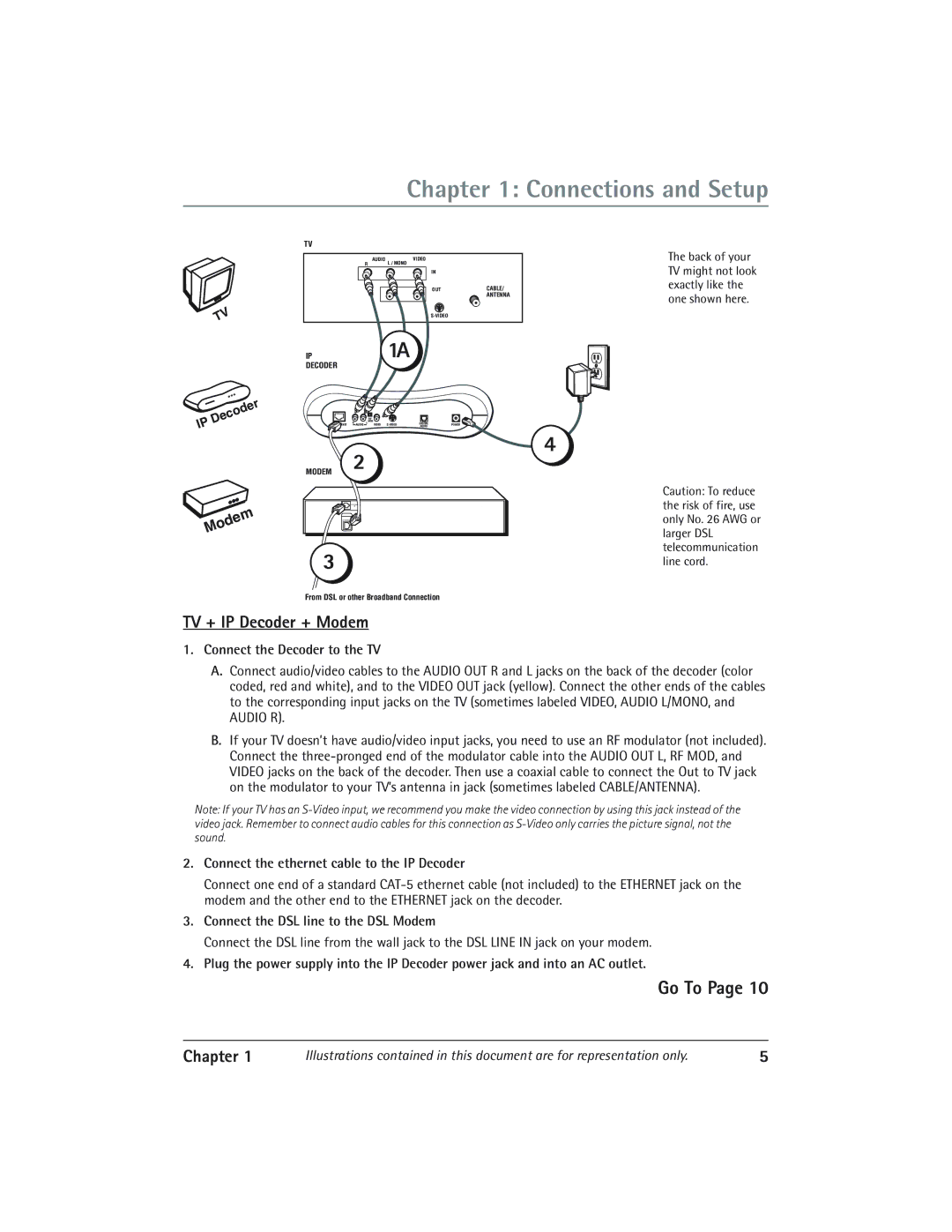
Chapter 1: Connections and Setup
TV
TV
AUDIOVIDEO
R | L / MONO |
|
| IN |
|
| L | CABLE/ |
| OUT | |
|
| ANTENNA |
|
|
IP | 1A |
DECODER |
|
The back of your TV might not look exactly like the one shown here.
IP | Decoder |
|
RF
MOD
ETHERNET | R AUDIO L | VIDEO | DIGITAL | POWER | |
|
|
|
| AUDIO |
|
MODEM
4
2
Modem
| Caution: To reduce |
| the risk of fire, use |
| only No. 26 AWG or |
| larger DSL |
3 | telecommunication |
line cord. |
From DSL or other Broadband Connection
TV + IP Decoder + Modem
1.Connect the Decoder to the TV
A.Connect audio/video cables to the AUDIO OUT R and L jacks on the back of the decoder (color coded, red and white), and to the VIDEO OUT jack (yellow). Connect the other ends of the cables to the corresponding input jacks on the TV (sometimes labeled VIDEO, AUDIO L/MONO, and AUDIO R).
B.If your TV doesnÕt have audio/video input jacks, you need to use an RF modulator (not included). Connect the
Note: If your TV has an
2.Connect the ethernet cable to the IP Decoder
Connect one end of a standard
3.Connect the DSL line to the DSL Modem
Connect the DSL line from the wall jack to the DSL LINE IN jack on your modem.
4.Plug the power supply into the IP Decoder power jack and into an AC outlet.
Go To Page 10
Chapter 1 | Illustrations contained in this document are for representation only. | 5 |
